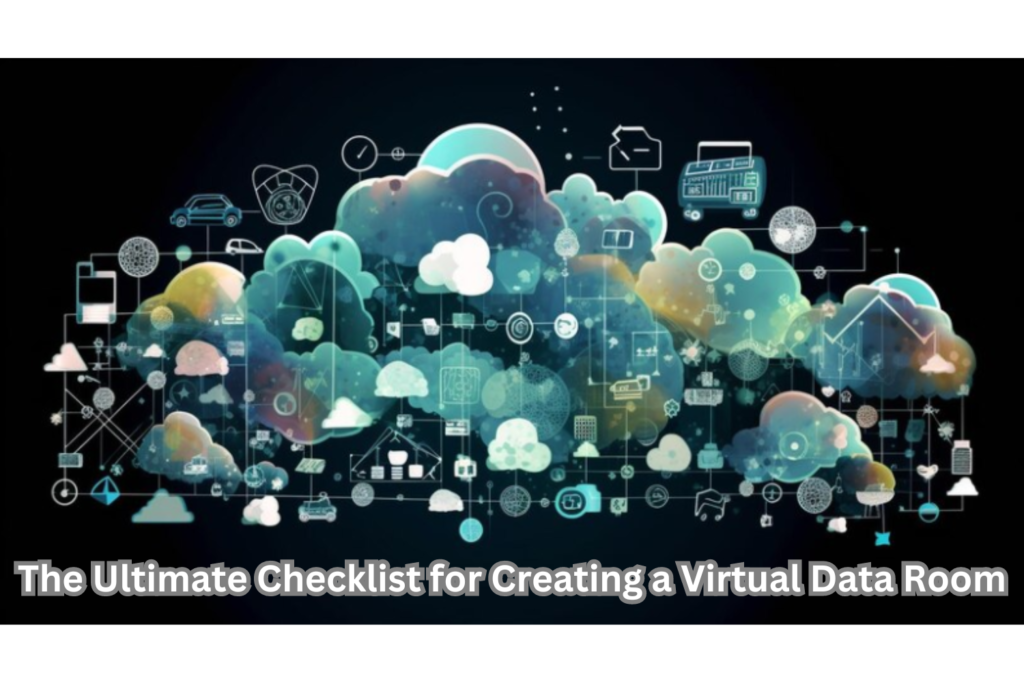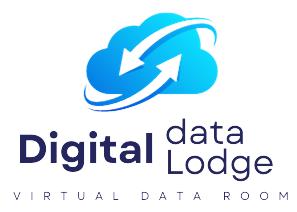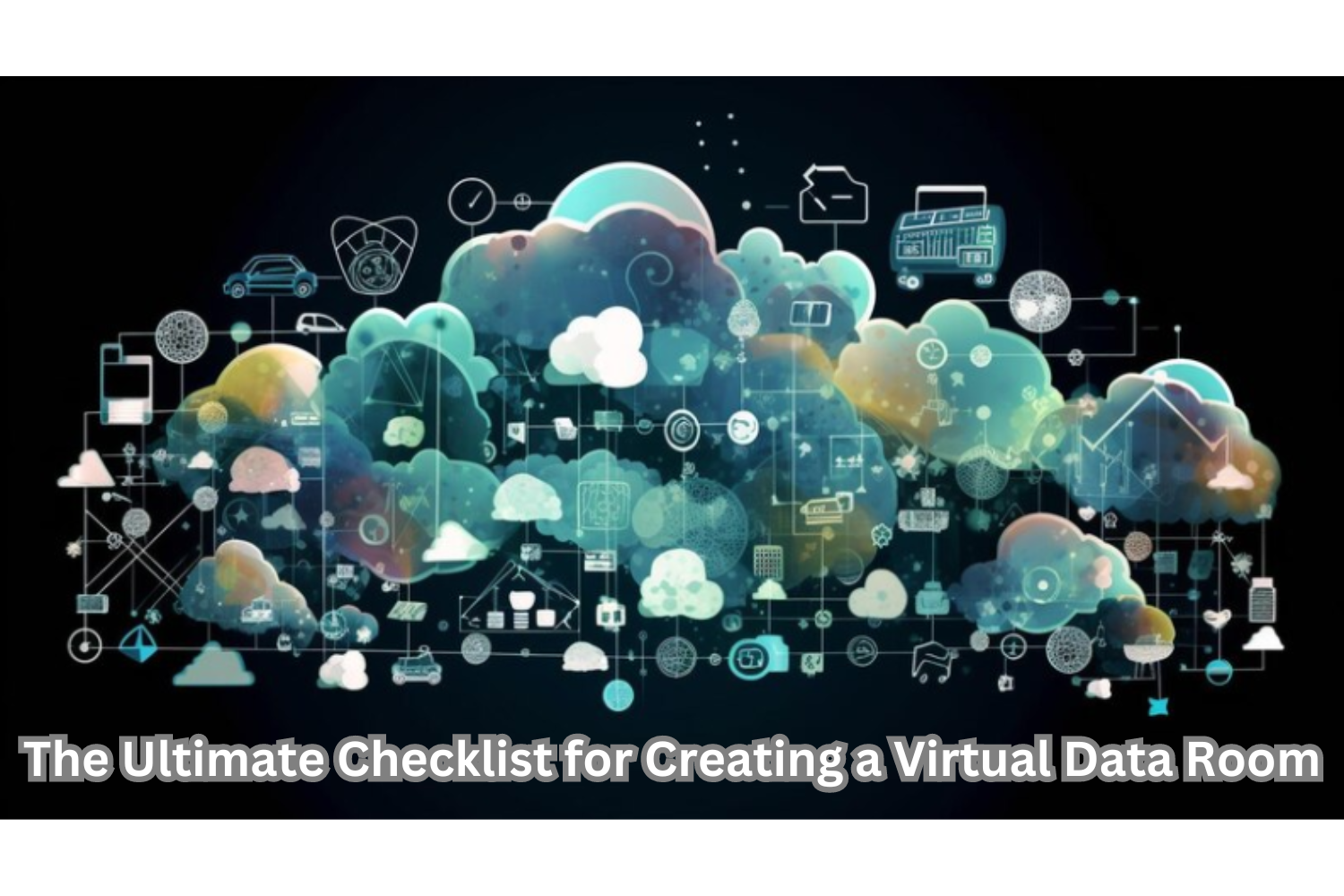A data room is helpful for any organization that prioritizes safe, cooperative document sharing, but it’s especially critical for companies going through mergers and acquisitions.

Businesses must divulge sensitive information to prospective investors and buyers during the due diligence.
You may ensure that only authorized parties can access sensitive data by putting in place a data room, which offers a safe platform for sharing such information.
Companies may also utilize a data room for board members who require access to sensitive data in order to make decisions, or for companies that need to demonstrate regulatory compliance, such as those in the financial and healthcare sectors.
Companies of different sizes can easily collaborate thanks to a data room.
Your team members may collaborate on projects and finish transactions together quickly because you can access it on any device, anytime, and from any location.
By putting in place a data room, your company can cut expenses related to document management by doing away with the need for physical document storage, printing, and courier services.
Who uses a data room, and why is it important?
- Businesses across various industries and with diverse needs can benefit from using a data room; in fact, it can be employed for a wide range of purposes and business requirements.
- Startups can benefit greatly from having a data room because of its structure, which makes it easier for them to organize data from the beginning.
- All industries can benefit from data rooms since they allow companies to store, classify, organize, share, and extract value from their data.
- Using data rooms for sales is one instance.
- For businesses that need to use the most recent data to provide accurate projections regularly, data rooms are perfect.
- Having instant access to workflows and data to keep documents moving quickly, you may complete more work in less time.
- This frees up your sales personnel from time-consuming data entry so they can concentrate on creating funnel leads.
- For instance, data rooms can increase the productivity of your sales staff by shortening the time needed to develop and close deals, which will improve client relations.
- You may reduce client churn and expedite the sales process for your entire company by staying organized and informed about ongoing transactions.
Intellectual property
To safeguard intellectual property, including copyrights, trademarks, and patents, it is imperative to prevent unwanted access.
A data room provides a secure location for storing and sharing information with external parties.
Joint ventures
Forming a joint venture with another business often necessitates sharing private information about your firm.
Product development

During the product development process, sensitive data, such as design requirements, product plans, and marketing strategies, needs to be shared with outside partners.
Charities and not-for-profits
These organizations may need to store and share confidential data, such as donor information, financial records, and legal documents.
Insurance claims
In the course of active insurance claims, it is common to exchange medical records, police reports, and financial information.
Tips and best practices for setting up a data room
Identify your data room structure
- Next, you must identify the structure of your data room.
- Data rooms typically organize data into folders, which you can “nest” to create a hierarchical structure.
- Use folders to group related documents together and make it easier for users to find the necessary information.
- Another option for structuring is indexing.
- This tags documents with keywords or metadata that enable users to locate files using specific terms.
- Version control is an essential aspect of data room structuring, particularly if you need multiple users to work together on a project.
- This feature comes as standard with PandaDoc and ensures users are working with the most up-to-date document version and can easily keep track of changes made by other team members.
Add users and set permissions
Consider who needs access to what in your organization.
For instance, which tasks will each user need to perform, and what level of access will they require?
For example,
- administrators need full access to all the documents in a data room, as well as the ability to add and remove users, set permissions, and manage the data room settings.
- However, investors may only need access to financial statements, business plans, and files relating to potential investments.
- They might require view-only access to certain documents but full access to others.
- Consider also whether they need to download documents and collaborate with other users in your data room.
- Before granting access to any third parties, take the time to plan out the different types of user roles you want to have in your data room and the types of files they should be able to view.
- For additional protection, you can employ the VDR (virtual deal room) features that PandaDoc offers, such as watermarking and access logs, to ensure sensitive documents don’t fall into the wrong hands.
- Most data room providers have a simple process for adding users, which typically involves entering their names and email addresses.
- Permission levels usually include read-only access, view and download access, and full access.
- Be sure to assign the appropriate permissions based on each user’s role and responsibilities.
- It’s a good idea to test your data room permissions before giving users access.
- To do this, log in as each user and verify that they have the appropriate level of access to the data room.
Create a non-disclosure agreement
- Sometimes, data rooms require a signature on a non-disclosure agreement before viewing specific files.
- This won’t always be the case, but it’s best practice to draft your own NDA as an extra layer of protection.
- Many data room software providers come with stock NDA text that you can adapt to suit your business.
- Your NDA should be tailored to address the specific needs of your organization’s data room and the users involved.
- You’ll need to define the scope of confidential information by choosing what must be excluded from the agreement, such as specific documents, data, or other materials.
Organize documents and files
A growing percentage of all corporate data—more than 60% of it—is kept in the cloud.
Therefore, it’s a wise choice to employ a data room to store important information about your company safely.
Let’s now review some advice on how to set up your data room effectively:
1. Select the top data room application.
- Choosing the finest data room software for your organization’s needs is an essential first step.
- Make sure you do your research and assess the functionality, integration, and user experience demands of your team.
- In this manner, you can evaluate the software solutions impartially and identify the best choice.
When searching for software, keep an eye out for data room characteristics such as:
- Attribute sets. Discover features like document classification, customizable templates, third-party integrations, drag-and-drop file upload, custom branding, and more.
- Simple to use. Software for data rooms should be easy to set up, intuitive, and handy for your team to use.
- Reporting and analytics using data. It’s critical to comprehend the access methods to your data room. Access to thorough document analytics is provided from inside your data room using a solution such as PandaDoc.
- Your user group. Once you’ve determined how many users your data room will have, see if your program can support them.
- Cost. Because cloud-based data room software usually has a subscription pricing structure, it is less expensive to use regularly as an operating expense than a significant capital expenditure.
- Protection. Strong security measures are necessary to guarantee that your data is safe and unhackable by others.
Bonus point
PandaDoc’s data room complies fully with SOC 2 Type II security requirements, FERPA, GDPR, and HIPAA regulations. Secure data encryption is offered by AES-256 technology to stop illegal access to your private company data.

Make sure to try out a variety of demos to compare different software solutions.
Before investing, the majority of data room software suppliers offer free trials so you can determine if they’re a good fit for your company.
To carry out this
- Make your file and document structures logical.
- Sort files and documents into folders corresponding to their content and purpose to create a logical file and document structure.
- You may, for instance, have files containing contracts, financial data, legal papers, and materials for due diligence.
- Adhere to unambiguous and uniform naming guidelines.
- To make it easy to find what’s within your files and to prevent confusion, give them names that are clear and consistent.
- Give documents metadata tags.
- To make it simpler to locate particular files and documents in your electronic data room, tag documents with metadata.
- Put related files in one group.
- Sort relevant files into subfolders for particular transactions or projects.
- Keep records current.
- Remove out-of-date versions of documents from your data room to keep them current.
Limit who has access to sensitive data
Create distinct folders with more stringent access rules to limit access to critical data.
Use software tools to streamline transferring data into the data room.
For example,
- PandaDoc’s data room offers valuable functions such as:
- Bulk upload of data
- A quick exchange of documents
- editor with drag-and-drop
Verify the software settings one last time.
- Verify and update users’ permissions frequently to make sure they always have the appropriate degree of access.
- Users whose jobs have changed should update their permissions, and any users who no longer need access to your data room should have theirs removed.
- Additionally, confirm that individuals in your data room can access, read, and change files and documents.
- Limiting sensitive information access to only those who require it is crucial.
Where to use PandaDoc’s VDR tool
The VDR room product from PandaDoc can be used in various corporate contexts where structured and safe document exchange is required.
It works very well for:
1. Obtaining funds
With PandaDoc’s VDR technology, businesses looking to raise capital may give prospective investors access to important company documents, including investor presentations, pitch decks, and financial statements.
2. Court actions
Confidential documents like case files and depositions between parties must be shared during legal proceedings.
To enable private file sharing between witnesses, legal teams, and other parties involved in court cases, use PandaDoc’s VDR technology.
3. Purchases and mergers
Mergers and acquisitions include sensitive information, such as financial records and legal agreements.
With PandaDoc’s VDR technology, several parties can access and evaluate the required documents in a regulated way, creating a secure environment for these transactions.
Due diligence
Giving sensitive financial and operational data is often necessary for due diligence for possible investments or partnerships.

The VDR tool from PandaDoc provides a safe way to exchange and evaluate documents with outside parties while keeping complete control over permissions and access.
Human resources (HR)
HR departments frequently handle sensitive employee data, such as contracts, compensation information, and performance appraisals. To securely store these records and exchange them with outside parties, such as recruiters, when needed, they use VDR systems.
How to set up PandaDoc’s VDR
With just a few easy steps, begin using PandaDoc to build up a virtual deal room:
- Create an account with PandaDoc (a free trial is available).
- For your VDR, create a new workspace.
- Protect your workspace’s settings to ensure access controls, user permissions, and custom branding.
- Upload a collection of files to designated directories.
- Set up document settings to manage version restrictions and watermarking.
- Invite users according to their user access, either one by one or in groups.
- Use our integrated analytics and reporting tools to monitor activity within your VDR.
- You are now prepared to share sensitive papers with the appropriate persons, both inside and outside the company, using your protected area.
- Sharing confidential business information made it easier
- This article explains how to set up a data room for the data requirements of your company.
- With PandaDoc, you can establish a virtual data room and take total control of the data in your company.
- In addition to this, you may find a variety of other document services, such as contract templates, eSigning solutions, document automation, and contract administration tools.
- Why don’t you act sooner? Give our free demo a try now!
FAQs
What’s a virtual data room, and why is my company in need of one?
Sensitive documents and files can be stored, managed, and shared online using a virtual data room (VDR). For companies involved in mergers and acquisitions, legal operations, financial audits, and other activities involving sensitive information, it is essential. By putting up a VDR, you can guarantee data protection, accessibility, and efficient teamwork.
How can I pick the data room software that best suits my requirements?
It’s crucial to choose the appropriate data room software. Strong security measures, an intuitive interface, tools for organizing documents, and adjustable permissions are qualities to look for. Well-known VDR companies with distinct benefits include Merrill, Firmex, and Intralinks. Before selecting, determine your unique needs.
What form should a data room have?
Your virtual data room’s layout should correspond with your company’s requirements. To make navigating easier, arrange documents into folders and subfolders. Make categories according to departments, projects, or kinds of documents to keep everything organized and easily accessible.
In a virtual data room, how can I add users and configure permissions?
In most cases, adding people to a VDR is simple. Administrators can email user invitations with the majority of VDR software. You can limit access to particular folders or documents and assign roles (reader, editor, administrator) regarding permissions. This guarantees that each user sees just the information relevant to their function.
Can I draft an NDA in the virtual data room?
Indeed, a lot of VDR platforms have an NDA creation and management capability. An NDA template can be altered and sent to the relevant parties, and the acceptance status can be monitored. This gives your data room an additional layer of legal protection.
How can I successfully arrange files and papers in a virtual data room?
Efficiency in document organization within a VDR is essential. Files should first be named descriptively. Follow a standard naming scheme and include metadata tags. Organize papers into logical folders so people can readily locate what they need.
In a virtual data room, how can I limit who has access to sensitive data?
Allow for granular permission settings to protect sensitive data. Give access only to those who need it. Restrict the ability to copy, download, or print to stop illegal distribution. To guarantee data security, check and change permissions regularly.
What should I look for when completing my VDR software’s final setup?
Make one last check before completing your VDR implementation:
Verify user authorization and access.
Make sure all of the documents are arranged correctly.
Check that the NDA procedure is working properly.
Verify security settings again, being sure to check data backup and encryption.
Teach users how to browse and use the VDR successfully.
What belongs in an online data room?
You should put private and sensitive documents in a virtual data room (VDR) related to a business transaction, including mergers and acquisitions, financing, or court cases. Financial statements, contracts, records of intellectual property, due diligence reports, and any other papers pertinent to the deal may be included in this. The main goal is maintaining data confidentiality while safely organizing, storing, and sharing these papers with authorized parties.
Just what is an online data room?
Confidential documents can be shared and stored securely online in a virtual data room (VDR), which is utilized for various business procedures. It gives all parties transaction access, examination of, and collaboration on critical documents in a safe and regulated environment. Due diligence, negotiations, and other crucial procedures are frequently streamlined using VDRs in the legal, financial, and real estate sectors.
How do you operate a virtual data room?
Features for document management and enhanced security are used in a virtual data room’s operation. This is how it usually operates:
- Document submit: Usually, in an organized folder hierarchy, users submit documents to the VDR.
- User Permissions: Administrators can designate which users can view, edit, or download particular documents by granting different users different access permissions.
- Security Measures: To safeguard data, the VDR uses multi-factor authentication, encryption, and other security measures.
- Audit Trails: The VDR keeps track of activity by tracking who viewed what documents and when.
- Q&A and Collaboration: Through direct platform sharing and question-asking, users can frequently interact with one other inside the VDR.
- Limitations on Downloading and Printing: To improve security, VDRs frequently include measures that restrict downloading or printing of documents.
How is the data room set up?
Setting up a virtual data room is essential to a transaction’s success. Here’s a broad overview:
- Organize your documents by setting up a well-organized folder structure for simple access. Sift through all documents to make sure they are accurate and comprehensive.
- File name: For simple identification, use name conventions that are unambiguous and consistent.
- Document Index: For easy access, make a table of contents or index.
- Security Measures: Implement safeguards, including audit trails, access controls, and encryption.
- User education: Make sure that every authorized user is conversant with the protocols and interface of the VDR.
- Testing: To make sure everything functions properly, test the VDR.
- Support staff: If you have any queries or concerns about technology, have a specialized support staff.

